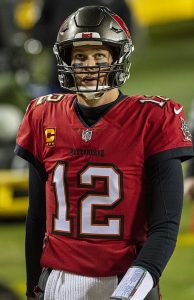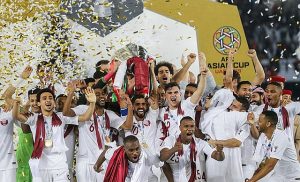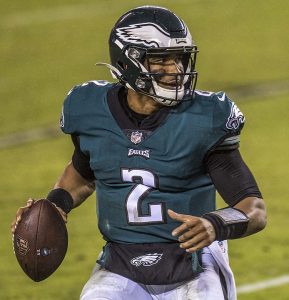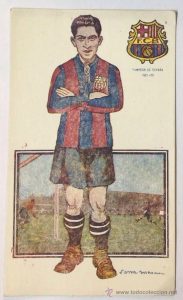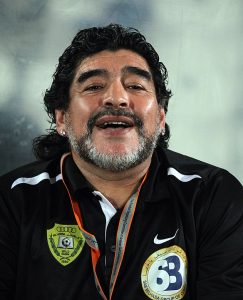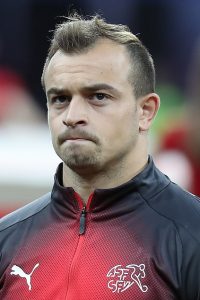
In Group E of the 2018 FIFA World Cup, Switzerland and Serbia were drawn against each other, along with Costa Rica and Brazil, in an interesting group. On June 22, 2018, both Switzerland and Serbia were set to face off in what would be a crucial match. Switzerland did just enough to earn a tight 1-1 draw with Brazil in their first game; Serbia narrowly overcame Costa Rica 1-0. Both teams knew whoever won the next match would enter the knockout round alongside Brazil in Group E. So, both teams needed a victory in order to keep their hopes alive.
Fortunately for fans, the game lived up to the billing and was one of the most exciting matches of the tournament. Serbia started on the front foot, taking a quick lead five minutes in after striker Aleksandar Mitrovic’s header. Early in the second half, Switzerland equaled the score 1-1 after a deflected ball found its way to Swiss midfielder Granit Xhaka, who unleashed an absolute missile of a shot and crashed the Serbian net. Both teams pushed for a winner, but deep into injury time, it would be Switzerland who came out on top. A through ball found midfielder Xherdan Shaqiri, who outpaced the Serbian defender and slid the ball into Serbia’s goal in what would be the last kick of the game. While the match itself was a showcase for the exciting football that can be found at the World Cup, it wasn’t Switzerland’s comeback, Xhaka’s great goal or even Mitrovic’s ability in the air that stole the headlines.
After Xhaka scored his equalizing goal, he ran towards the fans on the sidelines while crossing his open hands, making the symbol of an eagle. Then later on in the match, Shaqiri repeated this action, running towards the angry Serbian fans and making the same double-headed eagle hand gesture following his match-winning goal. FIFA was not pleased at all, and both Xhaka and Shaqiri were hit with fines that rose up to 10,000 francs. So, what exactly did the goal celebration mean, and why was it so controversial?
That eagle hand gesture is a symbol of Albanian nationalism and is supposed to represent the double-headed eagle on the Albanian flag. Despite being Swiss citizens, Xhaka and Shaqiri are both of Kosovar Albanian descent, and they hold their ethnic heritage very close to heart.
What does this have to do with Serbia? To put it lightly, Albania and Kosovo do not have the greatest relationship with Serbia, playing into the larger political and ethnic conflicts which have engulfed Eastern Europe and the Balkans for the past few decades.
This region of the world has a profound and contentious history that stretches back hundreds of years. The area contains multiple ethnic groups who have combative histories with each other. Following the end of the First World War and the collapse of several large land empires, the Kingdom of Yugoslavia was formed as a monarchial nation-state encompassing and unifying all Slavic peoples.
However, during the Second World War, Yugoslavia was invaded, occupied and split by the Axis powers. Unlike their neighbors, they liberated themselves from the Axis, and after the war, they reformed their nation, overthrew the monarchy and adopted communism. Now known as the Socialist Federal Republic of Yugoslavia, this nation covered the area of seven modern-day countries: Slovenia, Croatia, North Macedonia, Bosnia and Herzegovina, Serbia, Kosovo and Montenegro.
Following the death of dictating leader Josip Broz Tito, tensions between ethnic groups began to surface once again and many of the regions within Yugoslavia now wanted independence. The early 1990s saw major political changes on the continent, including the eventual European rejection of communism. This resulted in the collapse of numerous communist states in the region, and Yugoslavia found themselves next in line. The Breakup of Yugoslavia was now in full force, plunging the shattered nation into several wars across the decade.
By 1992, the Yugoslav Wars had been well underway, and the violence resulted in thousands of deaths. In April of that year, Croatia, Bosnia and Herzegovina, and Macedonia officially left the Socialist Federal Republic of Yugoslavia, ending the union. The fighting continued in Bosnia between the Bosniak Muslims, Serbs and Croats. Thankfully, treaties were signed in the mid-’90s, putting an end to these particular conflicts.
Despite treaties ending the bloodshed in Slovenia, Croatia, and Bosnia and Herzegovina, violence broke out again in 1998, as Kosovo now wanted to gain independence from Yugoslavia. Now that Yugoslavia had mostly fallen apart, Kosovars felt that instead of keeping together the former union, Serbia was instead trying to promote Serbian domination over the region, at the expense of Kosovo, a region made up mostly of ethnic Albanians.
Following a set of laws discriminatory laws against Kosovar-Albanian citizens, the Kosovo Liberation Army was formed and began attacking Serbian police. The Serbian military responded with force. As a result, the Kosovo War began. The war quickly became a humanitarian crisis, with war crimes (such as ethnic cleansing, mass murder and human eviction) becoming prevalent. The war became such a disaster that the US and NATO joined on behalf of the KLA, conducting an aerial bombing campaign against the Serbians, which caused much controversy.
The war officially ended a year later, but the hostilities still remain. Even after Kosovo declared independence in 2008, Serbia and many nations around the world fail to recognize their sovereignty. This war also caused a massive refugee crisis, spreading people from the region all across Europe.
How did all this affect Xhaka and Shaqiri? Well, their childhoods were directly changed forever due to the Kosovo War. The Kosovar city of Gjilan was the birthplace of Xherdan Shaqiri. By the year 1992, the Shaqiri family was forced to flee their homeland due to the carnage occurring on their city streets. They found refuge in Basel, Switzerland, where Xherdan spent his childhood. Granit Xhaka, on the other hand, was born in Basel, Switzerland after his family left Kosovo in 1990.
Despite spending most of their formative years in Switzerland, both Xhaka and Shaqiri held their Kosovar Albanian heritage with great importance, as the conflict in their motherland left unresolved scars on their life. For example, Shaqiri’s family had to work exceptionally hard, adjusting to life in Switzerland, learning German and taking whatever jobs they could. They would also send money to their remaining family in Kosovo to help them during the war.
Xhaka was raised with a similar passion for his culture. In fact, his family fled Kosovo amid rising tensions in 1990 but before the Yugoslav Wars erupted. They left after Xhaka’s father was released from prison in Serbia after he was charged with taking part in an anti-government protest in Belgrade. Furthermore, Granit Xhaka’s brother, Taulant, is also a soccer player, but he chose to represent the Albanian National Team rather than Switzerland. The two brothers even played each other when Albania faced off against Switzerland at Euro 2016.
So, to both Xhaka and Shaqiri, their goals against Serbia in the World Cup meant far more than a simple victory at a sporting event. To them, it was a show of nationalism and a symbol of pride, uniting the Kosovar Albanians who feel that they have been under the oppression of Serbia for far too long. The double-headed eagle hand gesture was more than a mere goal celebration; it was an intentional insult to Serbia, whose fans had showered the two players with boos and expletives earlier on in the match.
Football is often a pastime in which people turn to avoid the harsh realities, such as politics. However, since it is an international game, football and politics inevitably cross paths. In the case of Xhaka and Shaqiri’s goal celebrations against Serbia at the 2018 World Cup, these incidents are reminders to the audience of the passion and national heritage in football. Swiss fans were probably just happy their team won, but for the soccer fans of Kosovar or Albanian descent, this was a show of Albanian strength, a national victory on the global stage. For the Serbian fans, this was an offensive and unspeakable act carried out by two professional agitators who support a belligerent and illegitimate state.

